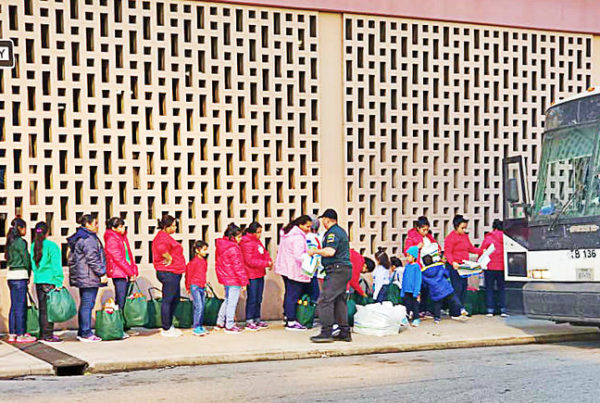In the southern Mexican border town of Ciudad Hidalgo this weekend, at a bridge that connects the city with Guatemala, a caravan of Central American asylum-seekers and migrants clashed with Mexican police and broke through locked metal gates on the Mexican side. A 26-year-old Honduran man was fatally injured by a rubber bullet that struck him in the head, and dozens of others were also injured. The migrants appear to be part of a smaller group following a larger contingent of 4,000-7,000 Central Americans traveling through Mexico toward the U.S. border where they plan to seek asylum. What they will face when and if they arrive is far from certain.
As we’ve reported, the Trump administration is ordering hundreds of active military troops to the border in a show of force. It is possible that the president could invoke emergency powers to turn away the entire group, and effectively shut down the border. Such promises, taken together with waves of deportations, U.S. Immigration and Customs Enforcement crackdowns and family separations at the border remind some historians of a period when all of the above – and worse – were the norm.
Emilio Zamora is a professor of history at the University of Texas at Austin, and the author of several books, some of which focus on the history of Mexicans in the United States. Zamora says in the 1930s and 1950s, up to 800,000 people of Mexican heritage, including children born in the United States, were deported by the federal government.
“To some extent, there was racial animus involved,” Zamora says. “But also, the argument that government officials made is that resources were very limited during the economic crisis [of the Great Depression] and that they should only be shared with U.S.-born people.”
The Mexican government faced criticism for not confronting the U.S. at the time, but it did set up programs that gave seeds, fertilizer and access to land for poor people whom, the authorities felt, would otherwise have migrated north into the U.S. It was called a “colonization program.”
Mass deportations to Mexico in the 1950s followed a period when the U.S. encouraged Mexicans to come work as laborers. Many stayed on after the program ended.
Zamora says the pattern of using foreigners as cheap labor, then removing them from the U.S. forcibly, is one that has been repeated many times. He says it wasn’t only the federal government that participated in this pattern.
“Newspapers, journalists, as well as politicians of all sorts and local government administrators, contributed to this environment in which Mexicans are seen as expendable objects in the labor market,” Zamora says.
Written by Shelly Brisbin.
















